What is a circle of control?
There are many parts of your life that you can control and other parts of your life that you have no control over.
For example: If you're stuck in a traffic jam and getting late for your meeting at work, complaining about traffic won't be helpful as it is not within your control. However, what's within your control is when you leave for the office, whether you can get the meeting postponed or try to attend the meeting from the car while still being stuck.
Consider another example: Say you worked very hard on a new product idea. You did all the necessary research, prepared the content and also took feedback from others. You were hoping to get a positive response from your manager. However, once you presented it, she turned it down. Blaming your manager for rejecting your idea or accusing her for not seeing it clearly won't be helpful. How your manager responds is not within your control. What you can do though is to seek feedback on what went wrong, what you can do better and set up another timeline to present your idea again.
Circle of control is a powerful mental model to get rid of negativity and rumination by letting go of things outside your control and embracing things within your control.
Circle of control includes:
- Things that you have direct control over.
- Things that you may not completely control, but can influence in significant ways (also called circle of influence).
Circle of concern includes things that you are concerned about but have no control over.
Spending time in circle of control can improve mental health, build resilience and improve overall well-being. Spending time in circle of concern can lead to feelings of inadequacy, helplessness and increased feelings of victimization.
What is an example of the circle of control?
Here are some of the examples of circle of control and circle of influence (things you can control and influence):
- Your goals
- Your behaviors and actions
- Where you spend your time and energy
- The way you treat others
- Your attitude
- Eating healthy
- The way you talk to yourself
- Choices you make
- Your values and beliefs
- Being truthful
- Your attitude towards difficulties
- Your boundaries
- Exercising
- People you surround yourself with
- How you respond
Here are some of the examples of circle of concern (things you cannot control):
- What other people think
- Your height, hair color, age etc
- The weather
- How others treat you
- What other people say or do
- Flight cancellation
- Job market condition
- Traffic
- If people like or dislike you
- What other people say about you
What is the circle of control exercise?
Circle of control, circle of influence and circle of concern is a powerful exercise to build high agency by shifting your time and energy from things outside your control to things within your control.
In order to make the most of this exercise, you need the following:
- Understand the difference between circle of control and circle of concern.
- Learn about reactive vs proactive people.
- Create your own circle of control and circle of concern. Think about everything you can control/influence and put it in your circle of control. Think about everything that you're concerned about but have no control over and put it in your circle of concern.
- Now, whenever you're struggling to process your emotions or feeling too overwhelmed or worried about something, look at your circle of control and circle of concern. If the worry is outside your control, it's best to let it go and move on. If the worry is within your control, identify a small step you can take to solve the problem and make some progress.
The workbook provided with this product includes:
- Worksheet to create your own circle of control and circle of concern.
- Step by step exercise to manage your worry and reclaim your power.
- Template to create your personal commitment by identifying things to embrace and things to let go.
- Expand your circle of influence by identifying things to start, stop, continue, do more of and do less of.
- Achieve your personal goals by defining your goals and creating an action plan to tackle them.
Why is circle of control important?
Circle of control is important because it gives you a mental framework to shift your energy from negativity and rumination by worrying about things outside your control to taking constructive action and feeling in control of your life by working on things within your control.
Circle of control enables you to:
- Manage your time and energy in a positive way
- Feel powerful and in control of your life.
- Develop proactive focus to align your actions with your personal values and goals.
Who created the circle of influence?
Stephen Covey introduced Circle of Influence in his book The 7 Habits of Highly Effective People.
The circle of influence mental model helps you understand how to best manage your time and energy by focusing on things within your control as opposed to worrying about things beyond your control.
He differentiates between proactive and reactive people based on where they spend their time―in their circle of control or circle of concern.
He says "Proactive people focus their efforts in the Circle of Influence. They work on the things they can do something about. The nature of their energy is positive, enlarging and magnifying, causing their Circle of Influence to increase."
He adds "Reactive people focus their efforts in the Circle of Concern. They focus on the weakness of other people, the problems in the environment, and circumstances over which they have no control. Their focus results in blaming and accusing attitudes, reactive language, and increased feelings of victimization. The negative energy generated by that focus, combined with neglect in areas they could do something about, causes their Circle of Influence to shrink."
What is circle of influence as a leader?
What leaders say and do has a tremendous impact on the people around them. When leaders operate from within their circle of concern, they spend a large amount of time worrying about things outside their control―change in market conditions, what others did or did not do, external circumstances that led to an unexpected outcome.
Focusing their efforts in their circle of concern makes them feel hopeless and helpless―they spend a significant amount of their time thinking about these problems but achieve no valuable outcome. Refusing to take responsibility by blaming and accusing their circumstances, conditions and other people for not achieving the desired outcomes turns them into a persecutor and make others feel victimized.
Spending more and more time in circle of concern makes these leaders neglect areas where their effort could have mattered and made a difference.
Leaders who operate within their circle of control increase their influence. By working on things within their control, they also inspire others to take action. They do this by:
- Creating a positive culture of accountability.
- Empowering employees to make their own decisions.
- Using mistakes as learning lessons.
- Thinking about the future demands and taking proactive steps to bridge the gap.
- Promoting experimentation, innovation and creative thinking in the organization.
- Challenging employees to achieve excellence in their thinking and work.
- Reducing communication gaps and introducing practices for healthy collaboration.
- Defining a clear strategy and vision and ensuring everyone in their org gets it right.
- Aligning each employee's career aspirations with available opportunities.
- Getting feedback on how they're doing and what they can do to be better
How to manage your worries?
We all have things we are worried about from time to time. Being worried is not a bad thing. Used right, it can be a fuel for growth as it can inspire us to challenge our assumptions, question our thought process and take useful action.
However, not all worries are within your control.
When you worry about things outside your control (circumstances and conditions you cannot change or influence), you waste mental cycles with absolutely no positive outcome. Left unhandled, this can lead to excessive worrying and rumination which can impact your personal health and mental well-being.
In order to turn worries to your advantage:
- Start with clearly stating what's really worrying you. Include all your thoughts and emotions.
- Next, identify if the worry is within your control by looking to your circle of control and circle of concern.
- If the worry is outside your control, commit to letting it go and instead use that saved time and energy in doing something else worthwhile.
- If the worry is within your control, identify a small step you can take to reduce your worry and make progress towards your goal.

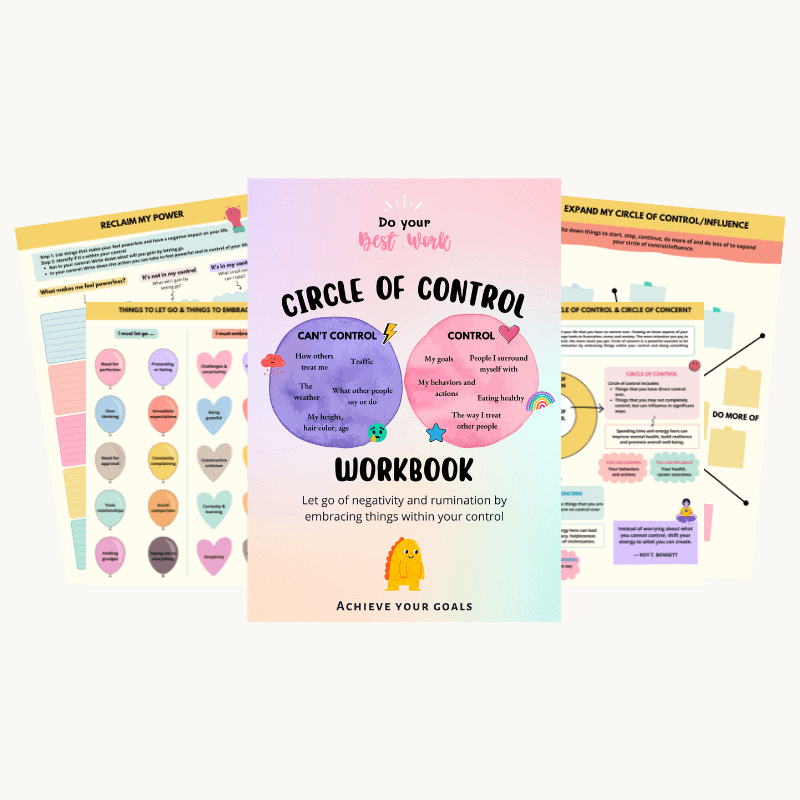
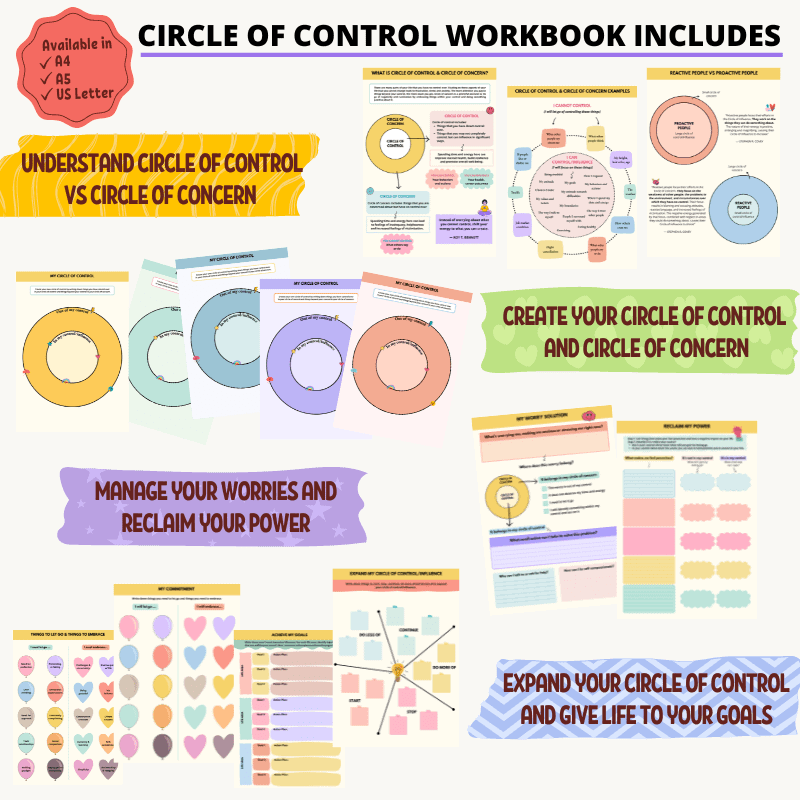
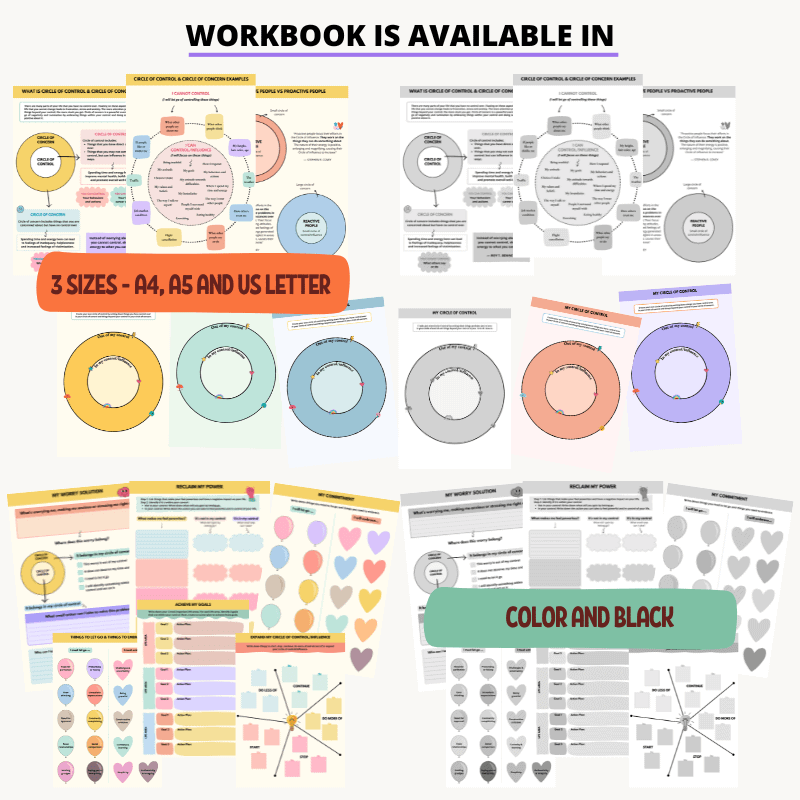
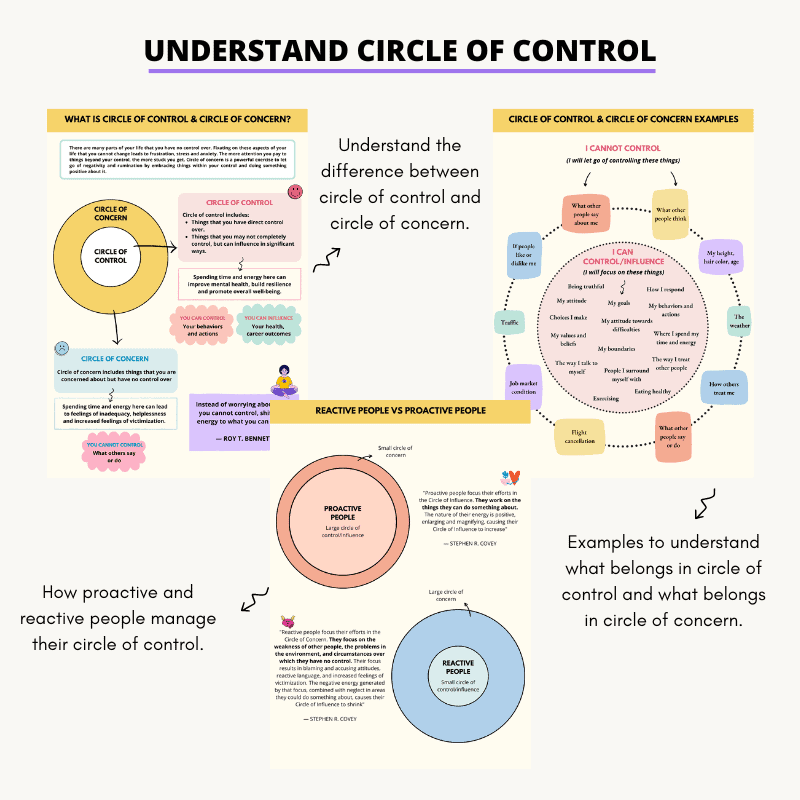
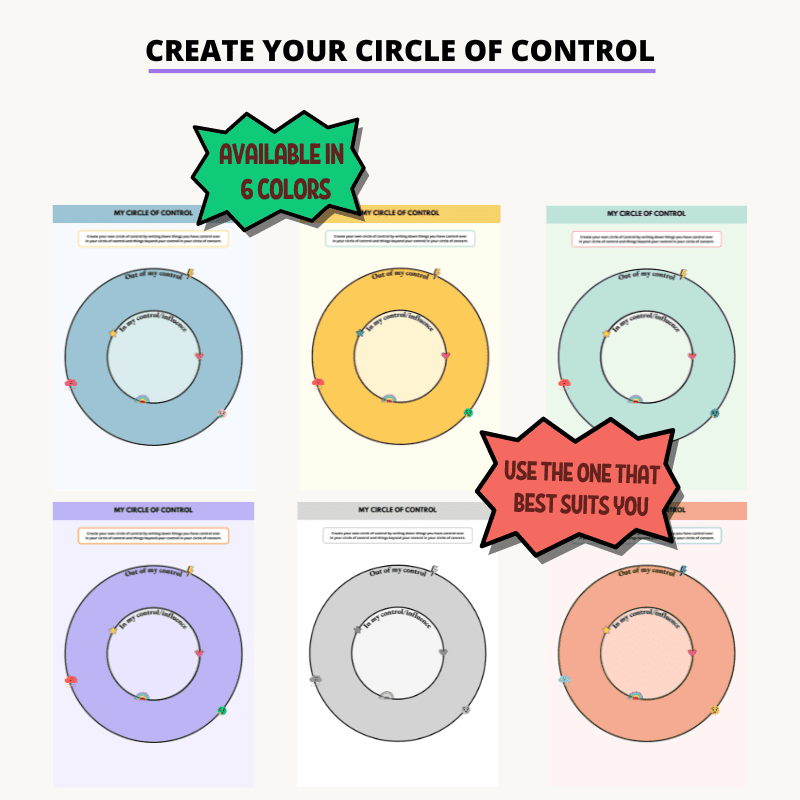
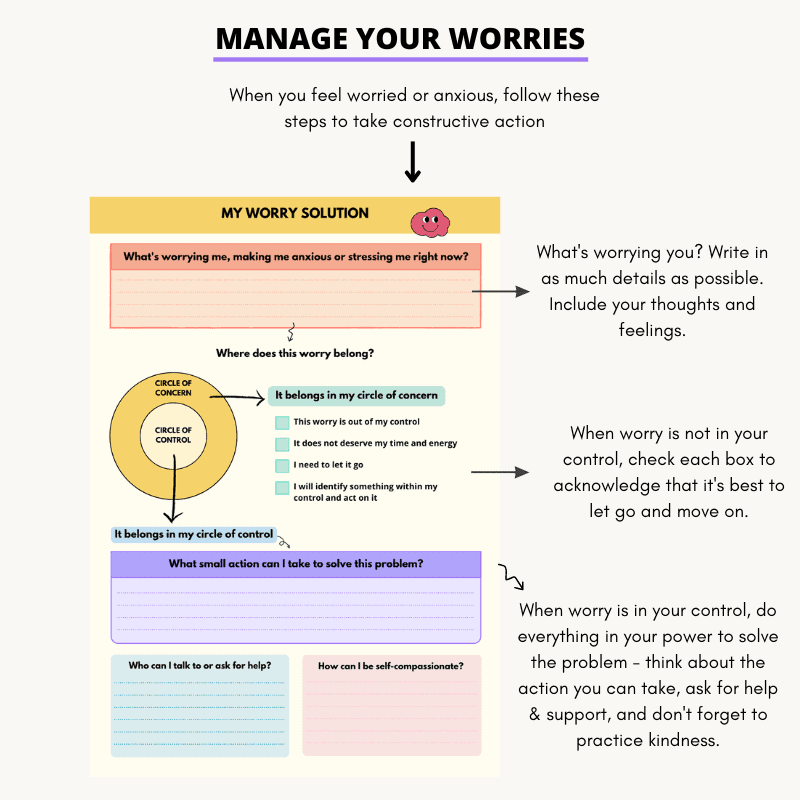
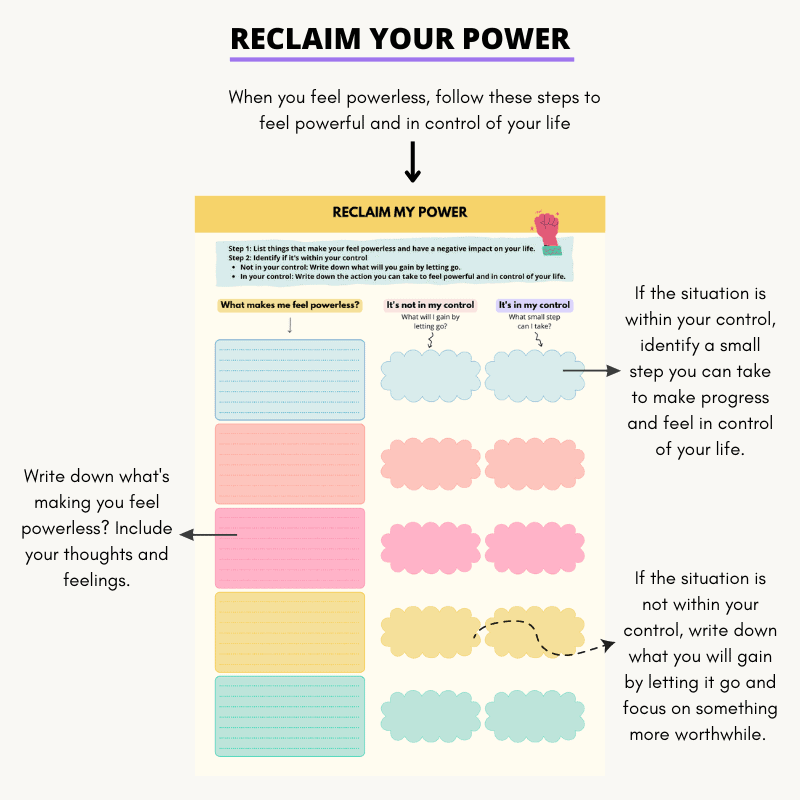
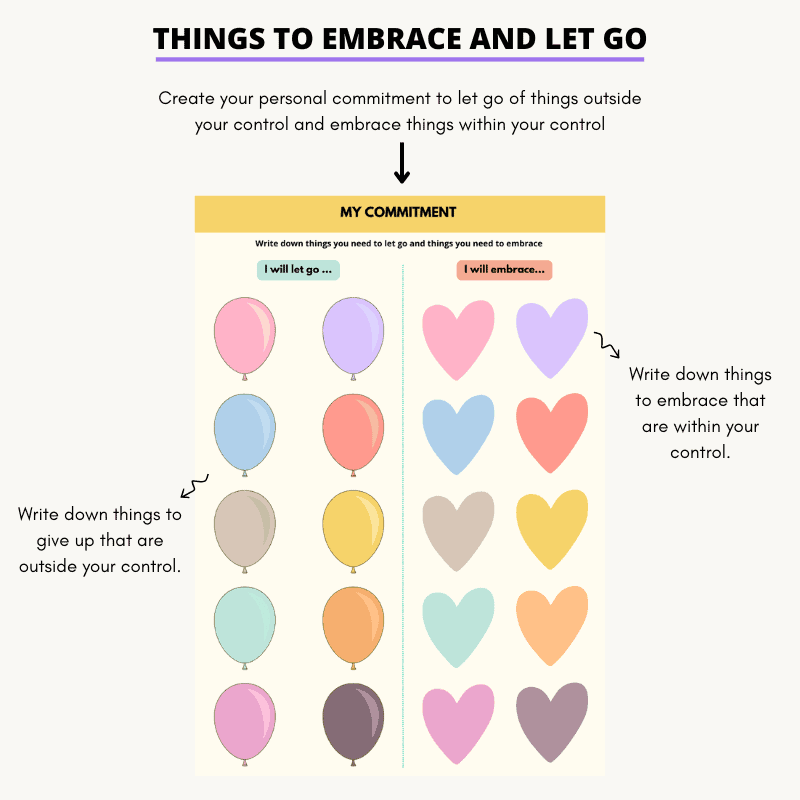
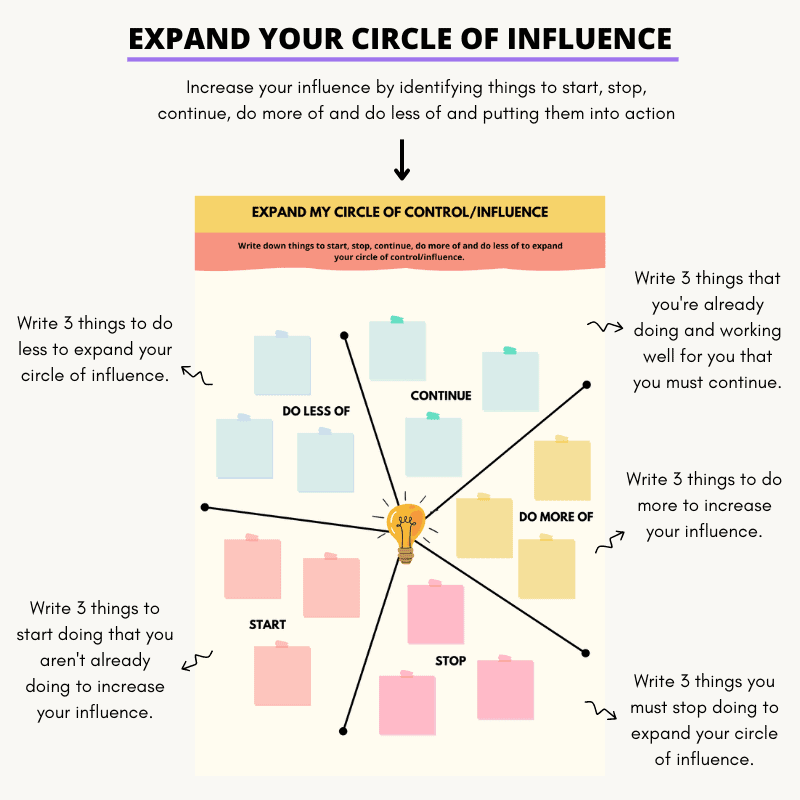
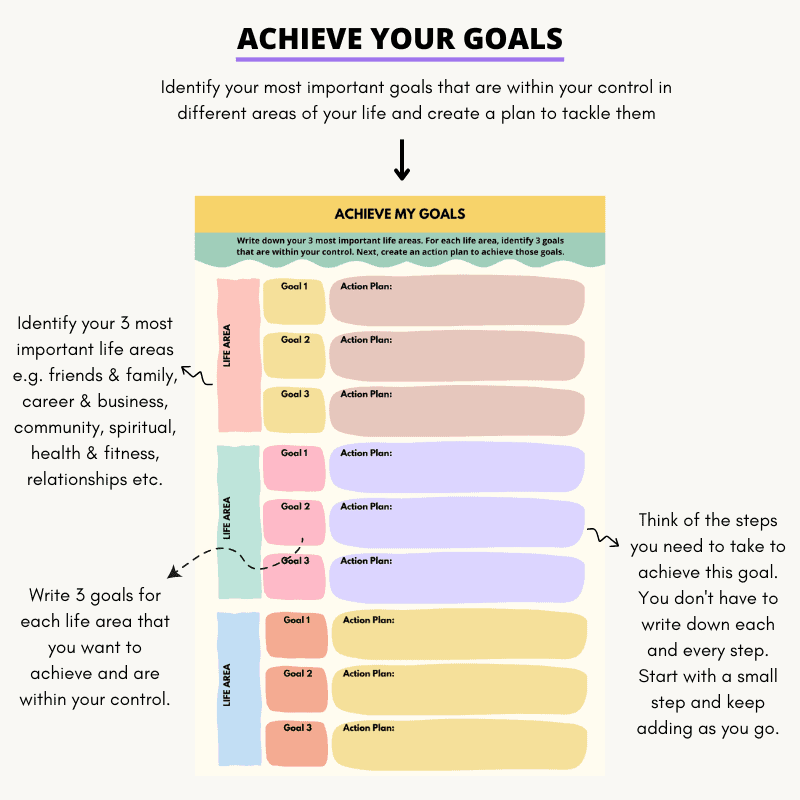

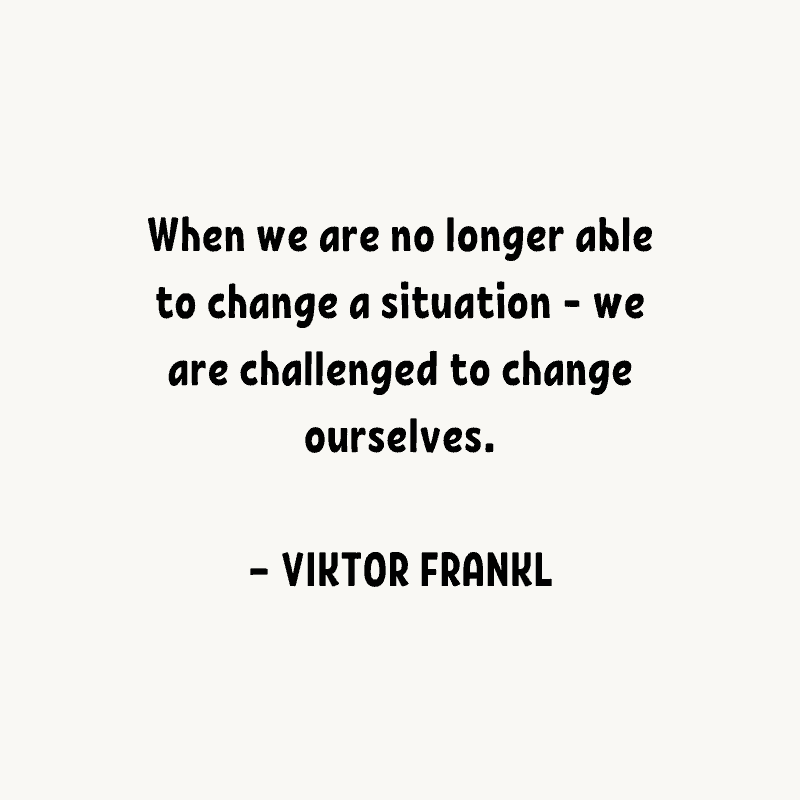
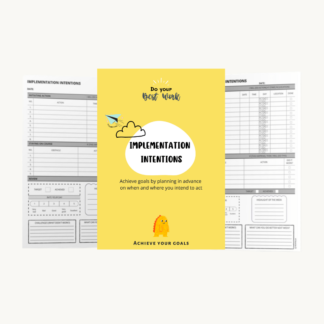
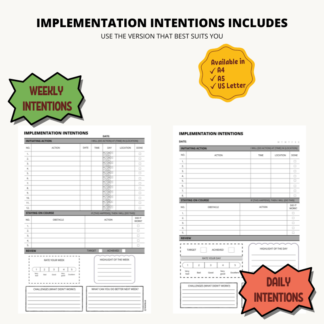
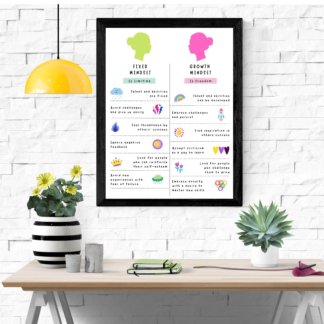

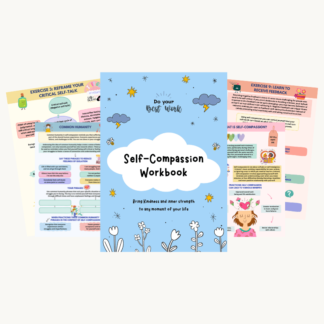
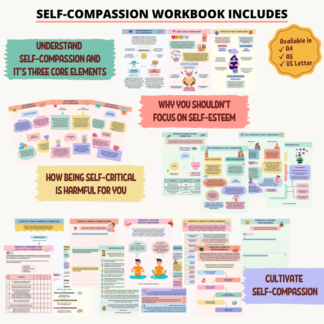
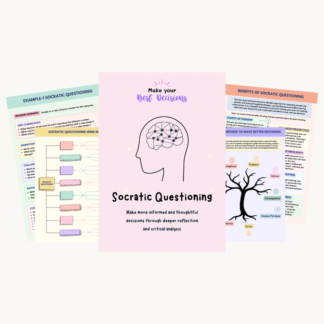
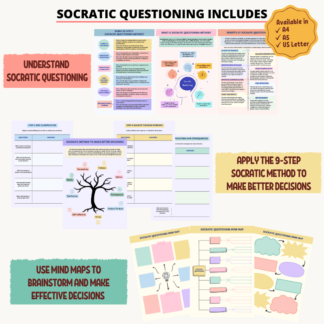
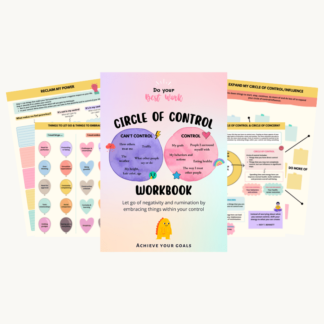
Reviews
There are no reviews yet.